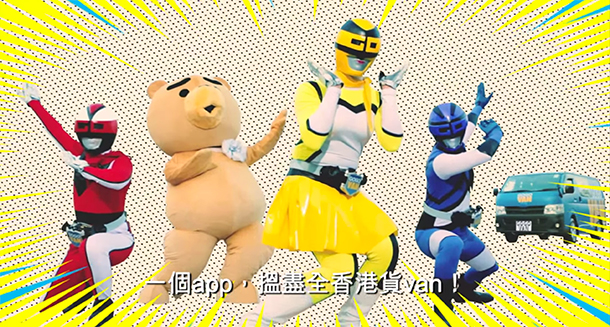Over the years, I have heard hundreds of startup tales. But the story of how the son of a Hong Kong construction worker found his way to Berkeley, Calif., and then managed to lead one of Hong Kong’s hottest startups is the best I’ve heard.
Last week Steven Lam met with my Babson College MBA students and me in Hong Kong to speak about his journey from a lower-income family to head GoGo Van, a fast-growing startup that bills itself as the Uber of delivery vans and has raised $17 million in venture capital.
Lam was born in Hong Kong to a construction worker. He flunked the school entrance exam and members of his family worried about his future. He thought he could learn from the failure and do better the next time.
Members of his family thought he should just follow his father into construction work. But Lam was not excited about that lifestyle since his father left for work before Lam awoke in the morning and returned after he was asleep.
Lam decided to go the United States, accepting an invitation from an uncle in Los Angeles. He had no money but lined up a job working in a Chinese restaurant and was able to make enough money to attend a community college. He did so well that he transferred into the University of California, Berkeley and graduated in 2010 with a degree in business.
Along the way, he tapped his experience speaking to customers at the Chinese restaurant to strengthen his English-speaking skills.
He also developed his entrepreneural skills, buying first-generation iPhones, searching Google for instructions on how to unlock them and reselling them on eBay. He also fixed computers for free, telling clients that he was struggling to pay for tuition and then asking for donations.
At UC Berkley, Lam loved participating in case competitions with engineers and designers.
Related: 3 Enticements U.S. Cities Could Copy From Hong Kong to Encourage Entrepreneurship
He returned to Hong Kong with a business idea. In the United States, Chinese restaurants put leftovers in boxes with lettering that he delivered for his restaurant job. But in Hong Kong, the restaurants used styrofoam boxes with no lettering. Lam’s idea was to put stickers on the takeout boxes that would advertise products. He lacked the capital to do this in the States so he returned to Hong Kong to try it there.
He bought 4,000 of these lunch boxes from the street and created stickers to affix to them with ads that he created, offering companies free advertising. The company gained momentum over nine months. Every day he did deliveries, starting at 6 a.m. But he had to halt delivery of the lunch boxes every few days as he lacked storage space because of his limited capital and lack of storage space.
He also lacked the capital to buy his own delivery vehicles so he used a call center to arrange deliveries. This system was terribly inefficient: Hundreds of call centers used radio frequencies to reach all drivers. The drivers were always late and consequently clients like Lam lacked control over their businesses.
Lam was so frustrated that he walked out of his office, went onto the street and started talking with van drivers and asked if he could pay them to make his deliveries. This was the beginning of his research into how call centers extracted fees to control the van-delivery ecosystem.
He discovered that the biggest call centers controlled more than 3,000 vehicles and charged drivers monthly subscription fees, leaving them without the ability to set their prices high enough to cover their costs or set their schedules. The drivers had no bargaining power. They were at the mercy of the call centers that competed with one another on price to the detriment of the van drivers.
Lam decided to get rid of his delivery business and build a system to eliminate the middleman, marking the genesis of GoGo Van. Samsung enabled him to build a mobile app for the drivers. He did that and taught them how to use it, spending early mornings talking to drivers and building a database of their telephone numbers that they would display on their windows. That way police would call them to move their vans when parked illegally doing a delivery.
He also put flyers on the windshields of the drivers when they parked the vans and converted 2 percent of them to using app. Over the course of three months, he built a database of thousands of drivers.
Related: How Alibaba’s Jack Ma Became the Richest Man in China
His business was not about the idea. It was about the team and workers’ shared passion to build the business and expand it.
In the process of raising capital, he discovered that people would gladly steal his idea. “Business is a battlefield,” says Lam. “It is not a nice place. All the people you talk to have their own agenda. Any deal terms can screw up whole company. I had a potential investor with money. I told him everything and he screwed me and became my biggest competitor.”
But Lam is squarely focused on the future. “My eyes look in front, not behind,” he says. “We do our best. We create our own way. The other guy creates pressure for us to improve.”
Explains Lam: “Execution is key. Copying can be done overnight. There are no limitations. Nothing can stop you from building your own dream.”
The biggest takeaway for American entrepreneurs is to be fearless and humble in the face of challenges.
Related: ‘We’re the Uber of X!’





